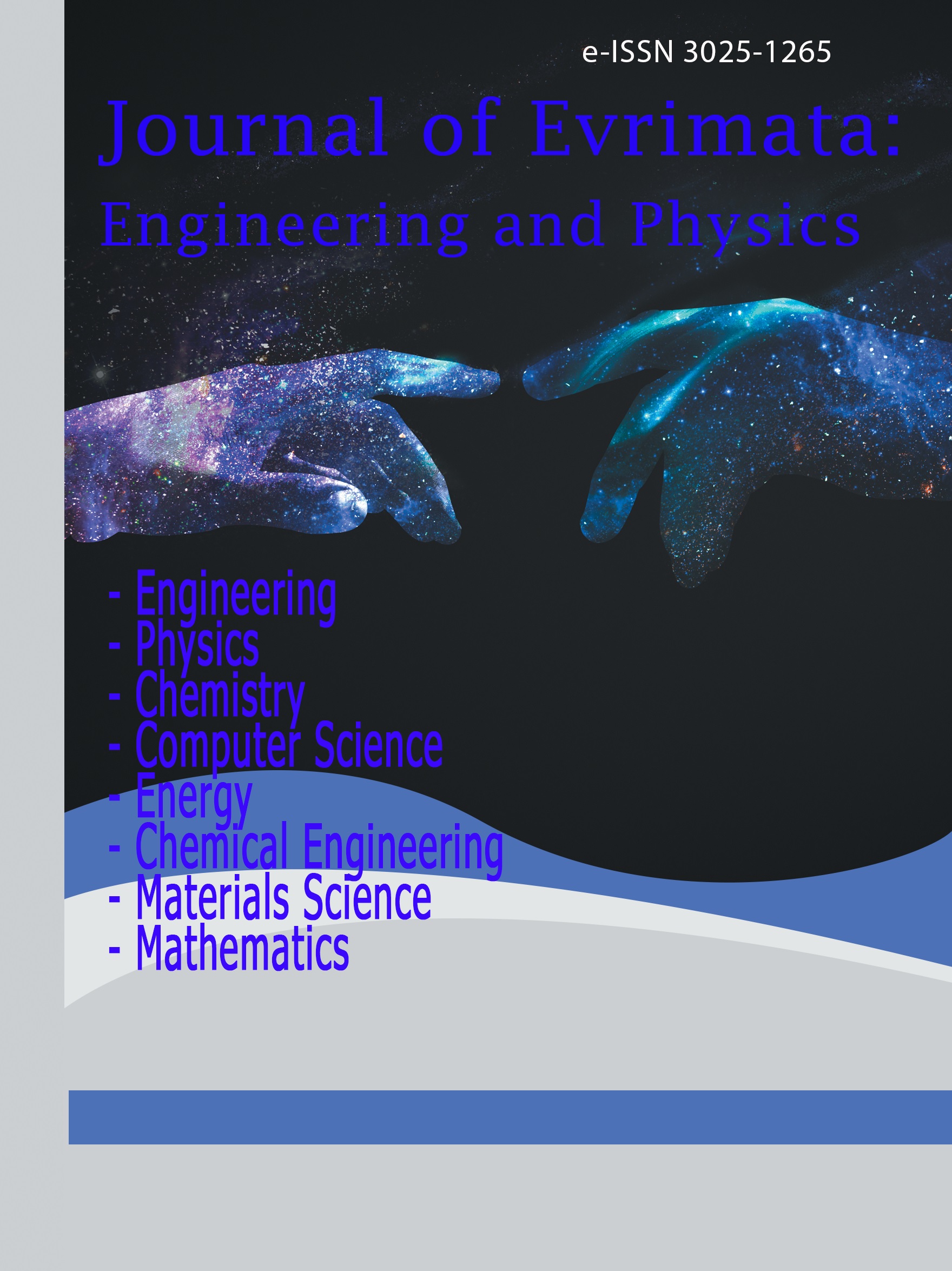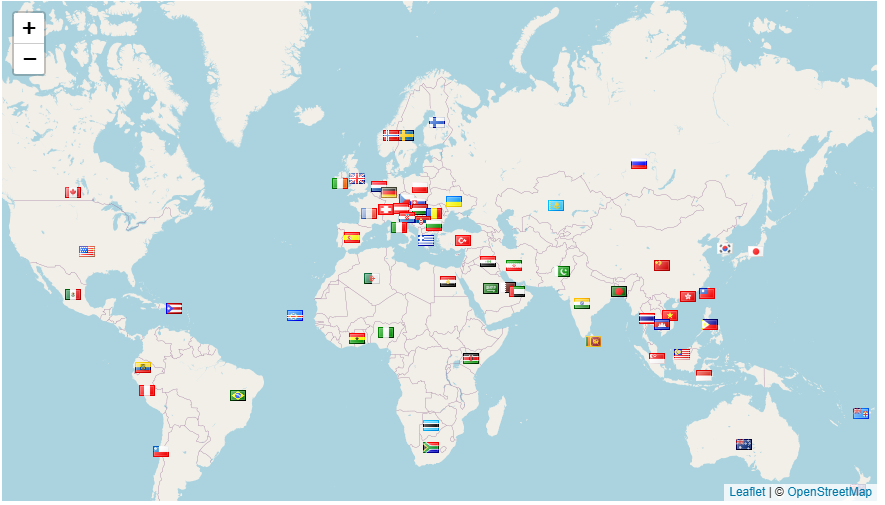Optimization of Injection Molding Temperature and Pressure on the Quality of Polypropylene Cutting Board
DOI:
https://doi.org/10.70822/journalofevrmata.vi.20Keywords:
Polypropylene, Injection Molding, Cutting BoardAbstract
This study delves into the optimization of polypropylene cutting board production through injection molding. Polypropylene, derived from propylene monomers, serves as the primary material. The injection molding process often leads to flash defects due to inadequate temperature and pressure settings. The research aims to discern the individual and interactive effects of temperature and injection pressure on the weight and surface area of the cutting boards. Experimental variations encompass temperature levels of 165°C to 175°C and injection pressures ranging from 25 Psi to 35 Psi. Data collection employs experimental methods, and analysis utilizes factorial and RSM approaches. Findings reveal that the lightest cutting boards result from the lowest temperature (165°C) and injection pressure (25 Psi), with an average weight of 105.6009 grams and a surface area of 21,158.3333 mm². In conclusion, both temperature and injection pressure significantly influence the weight and surface area of polypropylene cutting boards, providing valuable insights for enhanced manufacturing processes.
References
M. Combrzyński, A. Wójtowicz, A. Oniszczuk, D. Karcz, J. Szponar, and A. P. Matwijczuk, “Selected Physical and Spectroscopic Properties of TPS Moldings Enriched with Durum Wheat Bran,” Materials (Basel)., vol. 15, no. 14, 2022, doi: 10.3390/ma15145061.
W. T. Huang, Z. Y. Tasi, W. H. Ho, and J. H. Chou, “Integrating Taguchi Method and Gray Relational Analysis for Auto Locks by Using Multiobjective Design in Computer-Aided Engineering,” Polymers (Basel)., vol. 14, no. 3, 2022, doi: 10.3390/polym14030644.
A. Kościuszko, D. Sykutera, P. Czyżewski, S. Hoyer, L. Kroll, and B. Szczupak, “Processing and Mechanical Properties of Highly Filled PP/GTR Compounds,” Materials (Basel)., vol. 15, no. 11, 2022, doi: 10.3390/ma15113799.
C. H. Lo, C. C. Chen, P. H. L. Siek, and C. M. Yoandara, “Design of Injection Molding of Side Mirror Cover,” Sensors Mater., vol. 34, no. 6, 2022, doi: 10.18494/SAM3828.
H. Wu, Y. Wang, and M. Fang, “Study on Injection Molding Process Simulation and Process Parameter Optimization of Automobile Instrument Light Guiding Support,” Adv. Mater. Sci. Eng., vol. 2021, 2021, doi: 10.1155/2021/9938094.
X. Zhang, T. Ding, W. Wang, J. Liu, and C. Weng, “Study on the Effect of Processing Parameters on Residual Stresses of Injection Molded Micro-Pillar Array,” Polymers (Basel)., vol. 14, no. 16, 2022, doi: 10.3390/polym14163358.
G. Y. Liou, C. W. Su, P. W. Huang, S. J. Hwang, C. T. Huang, and H. S. Peng, “Fabrication and Property Characterization of Long-Glass-Fiber-Reinforced Polypropylene Composites Processed Using a Three-Barrel Injection Molding Machine,” Polymers (Basel)., vol. 14, no. 6, 2022, doi: 10.3390/polym14061251.
M. Hubmann et al., “Influence of Injection Molding Parameters on the Peel Strength between Plasma-Treated Fluoropolymer Films and Polycarbonate,” Polymers (Basel)., vol. 15, no. 6, 2023, doi: 10.3390/polym15061568.
K. Formas, A. Kurowska, J. Janusz, P. Szczygieł, and I. Rajzer, “Injection Molding Process Simulation of Polycaprolactone Sticks for Further 3D Printing of Medical Implants,” Materials (Basel)., vol. 15, no. 20, 2022, doi: 10.3390/ma15207295.
N. yang Zhao, J. yuan Lian, P. fei Wang, and Z. bin Xu, “Recent progress in minimizing the warpage and shrinkage deformations by the optimization of process parameters in plastic injection molding: a review,” International Journal of Advanced Manufacturing Technology, vol. 120, no. 1–2. 2022. doi: 10.1007/s00170-022-08859-0.
J. Wang and Q. Mao, “Methodology Based on the PVT Behavior of Polymer for Injection Molding,” Adv. Polym. Technol., vol. 32, no. 2013, 2012, doi: 10.1002/adv.
S. C. Chen, C. W. Chang, C. Y. Tseng, E. N. Shen, and C. Te Feng, “Using p(Pressure)-t(temperature) path to control the foaming cell sizes in microcellular injection molding process,” Polymers (Basel)., vol. 13, no. 11, 2021, doi: 10.3390/polym13111843.
R. G. Pabst, A. F. de Souza, A. G. Brito, and C. H. Ahrens, “A new approach to dynamic forecasting of cavity pressure and temperature throughout the injection molding process,” Polym. Eng. Sci., vol. 62, no. 12, 2022, doi: 10.1002/pen.26166.
M. Bont, C. Barry, and S. Johnston, “A review of liquid silicone rubber injection molding: Process variables and process modeling,” Polymer Engineering and Science, vol. 61, no. 2. 2021. doi: 10.1002/pen.25618.
M. Traintinger, R. C. Kerschbaumer, B. Lechner, W. Friesenbichler, and T. Lucyshyn, “Temperature profile in rubber injection molding: Application of a recently developed testing method to improve the process simulation and calculation of curing kinetics,” Polymers (Basel)., vol. 13, no. 3, 2021, doi: 10.3390/polym13030380.
C. Macedo, A. M. Brito, L. Faria, C. L. Simões, J. Laranjeira, and R. Simoes, “The potential of RHCM technology in injection molding using a simple convention heating and cooling system,” Results Eng., vol. 19, 2023, doi: 10.1016/j.rineng.2023.101349.
J. Maderthaner, A. Kugi, and W. Kemmetmüller, “Optimal control of the part mass for the injection molding process,” J. Process Control, vol. 129, 2023, doi: 10.1016/j.jprocont.2023.103027.
Y. Lu, K. Jiang, and M. Wang, “Study on rheological properties of in-mold co-injection self-reinforced polymer melt,” Polym. Test., vol. 93, 2021, doi: 10.1016/j.polymertesting.2020.106910.
M. H. Tsai et al., “Development of an Online Quality Control System for Injection Molding Process,” Polymers (Basel)., vol. 14, no. 8, 2022, doi: 10.3390/polym14081607.
L. Veltmaat, F. Mehrens, H. J. Endres, J. Kuhnert, and P. Suchde, “Mesh-free simulations of injection molding processes,” Phys. Fluids, vol. 34, no. 3, 2022, doi: 10.1063/5.0085049.
N. T. Kakhramanov, K. V. Allahverdiyeva, F. A. Mustafayeva, and K. N. Nasibov, “THEORETICAL ASPECTS OF THE INJECTION MOLDING PROCESS OF MULTICOMPONENT NANOCOMPOSITES BASED ON POLYOLEFINS,” ChemChemTech, vol. 65, no. 1, 2022, doi: 10.6060/ivkkt.20226501.6451.
C. M. Lin and Y. J. Chen, “Coaxiality Optimization Analysis of Plastic Injection Molded Barrel of Bilateral Telecentric Lens,” Symmetry (Basel)., vol. 14, no. 2, 2022, doi: 10.3390/sym14020200.
J. Y. Chen, J. X. Zhuang, and M. S. Huang, “Enhancing the quality stability of injection molded parts by adjusting V/P switchover point and holding pressure,” Polymer (Guildf)., vol. 213, 2021, doi: 10.1016/j.polymer.2020.123332.
T. Tábi and K. Pölöskei, “The Effect of Processing Parameters and Calcium-stearate on the Ejection Process of Injection Molded Poly(Lactic Acid) Products,” Period. Polytech. Mech. Eng., vol. 66, no. 1, 2022, doi: 10.3311/PPME.18246.
J. Hou, G. Zhao, and G. Wang, “Polypropylene/talc foams with high weight-reduction and improved surface quality fabricated by mold-opening microcellular injection molding,” J. Mater. Res. Technol., vol. 12, 2021, doi: 10.1016/j.jmrt.2021.02.077.
M. S. Huang, J. Y. Chen, and Y. Q. Xiao, “Quality Monitoring of Micro-shrinkage Defects in Thick-walled Injection Molded Components,” Meas. J. Int. Meas. Confed., vol. 201, 2022, doi: 10.1016/j.measurement.2022.111733.
C. Weng, H. Sun, J. Lai, J. Liu, and Z. Zhai, “Experimental investigation and molecular dynamics simulations of the effect of processing parameters on the filling quality of injection-molded micropillars,” Polym. Eng. Sci., vol. 61, no. 10, 2021, doi: 10.1002/pen.25768.
Y. Spoerer, R. Boldt, R. Androsch, and I. Kuehnert, “Pressure-and temperature-dependent crystallization kinetics of isotactic polypropylene under process relevant conditions,” Crystals, vol. 11, no. 9, 2021, doi: 10.3390/cryst11091138.
C. Wang, V. Shaayegan, F. Costa, S. Han, and C. B. Park, “The critical requirement for high-pressure foam injection molding with supercritical fluid,” Polymer (Guildf)., vol. 238, 2022, doi: 10.1016/j.polymer.2021.124388.
R. Ahmed, A. Mushtaq, S. Hashmi, S. Abbasi, and Z. U. Ali, “To Explore the Effect of Injection Molding Processing Parameters on Crazing in Acrylic Polymers,” J. Chem. Soc. Pakistan, vol. 44, no. 4, 2022, doi: 10.52568/001072/JCSP/44.04.2022.
Downloads
Published
Issue
Section
License
Copyright (c) 2023 Ramadhana Luhur Prabangkara, Sugeng Hadi Susilo

This work is licensed under a Creative Commons Attribution 4.0 International License.







